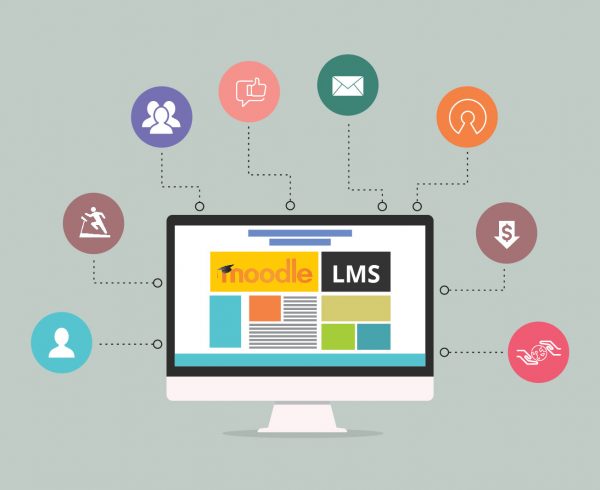Table of Contents:
- What is Print-on-demand?
- What are the Book Types Available in Print-on-demand Technology?
- Top Four Publishers That Uses Print-on Demand?
- Conclusion
What is Print-on-demand?
Print-on-demand is a printing technology that allows for the creation of physical copies of a book, magazine, or other printed material only when a customer orders it. This is in contrast to traditional printing methods, which require publishers to print large quantities of books in advance, in order to make them available for sale.
With print-on-demand, customers can place an order for a specific book, and the printing company will print a copy of the book on demand, typically using digital printing technology. This allows publishers to save on printing and storage costs, as well as reducing the risk of overstocking or understocking.
Print-on-demand has become increasingly popular in recent years, particularly with the rise of self-publishing platforms such as Amazon’s Kindle Direct Publishing and IngramSpark. These platforms allow independent authors to upload their books, and then have them printed and distributed on demand, without the need for a traditional publishing deal.
The frequency with which print-on-demand is used for printing can vary depending on the industry and the specific product being printed. However, print-on-demand has become increasingly popular in recent years, particularly in the book publishing industry.
In addition to books, print-on-demand is also commonly used for printing products such as t-shirts, mugs, and other merchandise. This is because it allows for small quantities of products to be printed at a time, without the need for large minimum order quantities.
The use of print-on-demand is growing as more industries and businesses recognize the benefits of this technology for cost-effective, flexible, and efficient printing.
InDesign is an important tool in the print-on-demand industry because it provides designers with the necessary tools and features to create high-quality, print-ready files that are optimized for printing on demand. It is important in print-on-demand for several reasons:
- Layout and design: InDesign provides powerful tools for layout and design, making it ideal for creating print-ready files that are optimized for printing on demand. With InDesign, designers can easily create templates for books, magazines, and other printed materials, and can customize them for each individual order.
- Compatibility: InDesign is compatible with a wide range of file formats, including PDF, which is the standard file format for print-on-demand. This means that designers can easily create files in InDesign and then export them as PDFs for printing on demand.
- Workflow automation: InDesign also offers powerful automation features, such as the ability to create and apply styles and templates, which can save time and improve workflow efficiency when dealing with large volumes of print-on-demand orders.
- Integration with other Adobe software: InDesign integrates seamlessly with other Adobe software, such as Photoshop and Illustrator, which are often used in the print-on-demand industry for image editing and graphic design. This integration allows designers to easily import images and graphics from these programs into InDesign, and vice versa.
What are the Book Types Available in Print-on-demand Technology?
- Self-published books: Print-on-demand is often used by self-published authors who want to make their books available to readers without having to deal with the upfront costs and logistical challenges of traditional publishing. With print-on-demand, authors can upload their manuscript files to a self-publishing platform, such as Amazon’s Kindle Direct Publishing, and have their books printed and shipped to customers on demand.
- Out-of-print books: Print-on-demand is also commonly used for books that are out of print or have limited availability. With print-on-demand, publishers can keep these books available to customers without having to maintain a large inventory of physical copies.
- Academic books: Print-on-demand is often used for academic books, which may have a limited audience and therefore require smaller print runs. With print-on-demand, academic publishers can print books as they are ordered, reducing the need for large upfront investments in printing and storage.
- Photobooks: Print-on-demand is also ideal for creating photobooks, which often require high-quality printing and binding. With print-on-demand, photographers and other creatives can upload their images and designs to a platform such as Blurb, and have their books printed and shipped to customers on demand.
Many publishing companies now use the print-on-demand concept, either as a primary means of production or as a supplement to traditional printing methods. Some of publishing companies that use print-on-demand include:
- IngramSpark: IngramSpark is a print-on-demand and distribution platform that is used by many independent publishers to produce and distribute their books.
- CreateSpace (now part of Amazon’s KDP): CreateSpace was a popular print-on-demand platform that allowed authors to self-publish their books, and was acquired by Amazon in 2005. CreateSpace has since been merged with Amazon’s Kindle Direct Publishing (KDP) platform, which continues to offer print-on-demand services to authors.
- Lulu: Lulu is a print-on-demand and self-publishing platform that allows authors to create and sell their own books, as well as offering a range of publishing services.
- Blurb: Blurb is a print-on-demand platform that specializes in creating photobooks, as well as offering services for creating and printing other types of books.
- Lightning Source (owned by Ingram Content Group): Lightning Source is a print-on-demand and distribution platform that is used by many publishers, including traditional publishing houses, to produce and distribute their books.
Most of the publishers use the print-on-demand concept as a way to produce books more efficiently and cost-effectively.
Top Four Publishers That Uses Print-on Demand?
- Hachette Book Group: Hachette is one of the largest publishing companies in the world and has embraced print-on-demand technology as a way to produce books more efficiently. They use print-on-demand for titles that have low demand or are out of print, allowing them to keep these titles available to customers without the need for large print runs or inventory storage.
- Simon & Schuster: Simon & Schuster is another large publishing company that uses print-on-demand technology to produce books. They have partnered with Ingram Content Group to offer print-on-demand services for select titles, allowing them to keep books in print without the need for large print runs.
- HarperCollins: HarperCollins has also embraced print-on-demand technology as a way to produce books more efficiently. They have partnered with Lightning Source, a print-on-demand and distribution platform owned by Ingram Content Group, to offer print-on-demand services for select titles.
- Penguin Random House: Penguin Random House, one of the largest publishing companies in the world, uses print-on-demand technology to produce books for their Print-on-Demand program. This program allows books to be printed and shipped to customers within 24 hours of ordering, reducing the need for large print runs and inventory storage.
Conclusion
Hurix provides print-on-demand services for books, among other services. Hurix offers a wide range of publishing solutions for both traditional and self-publishing authors, including print-on-demand services. Print-on-demand services allow authors to print small quantities of books as needed, reducing the need for large print runs and inventory storage.
Related Article – Publishing Services: End-to-End Services for Journal Publishers











